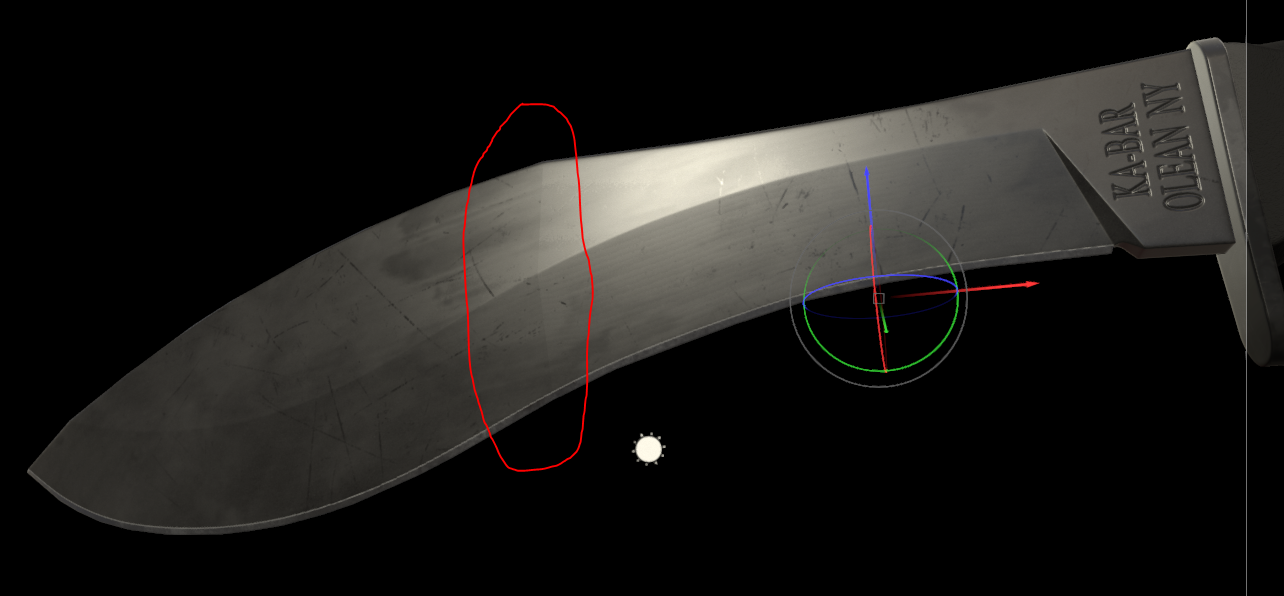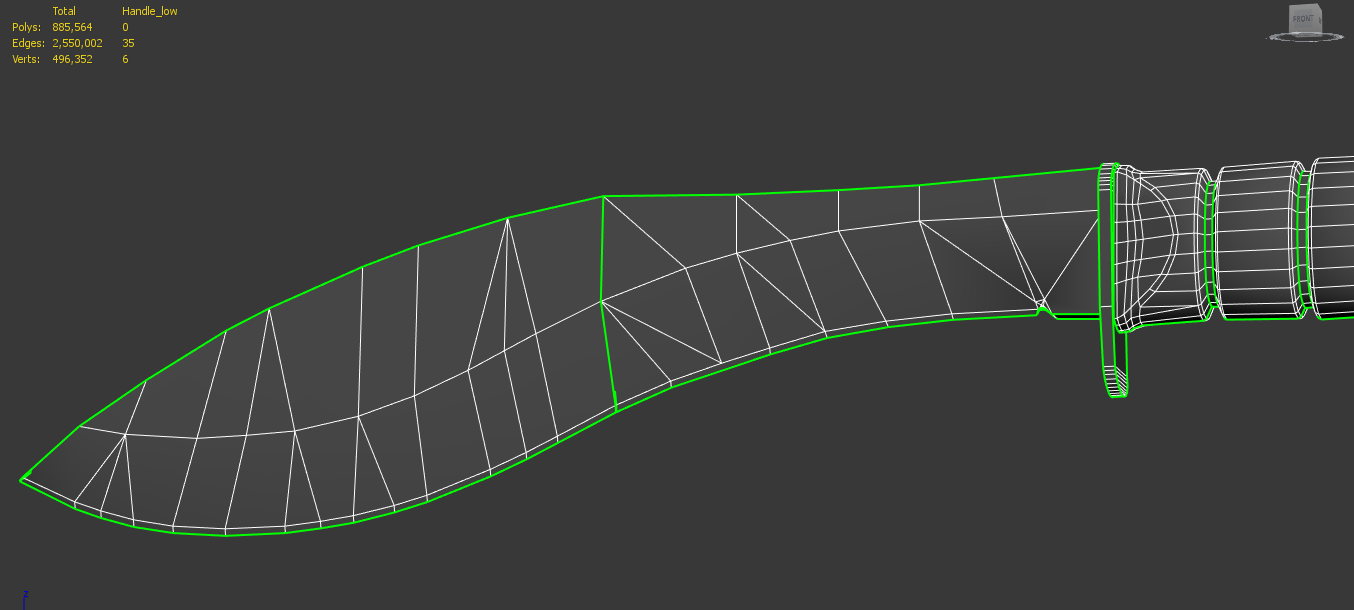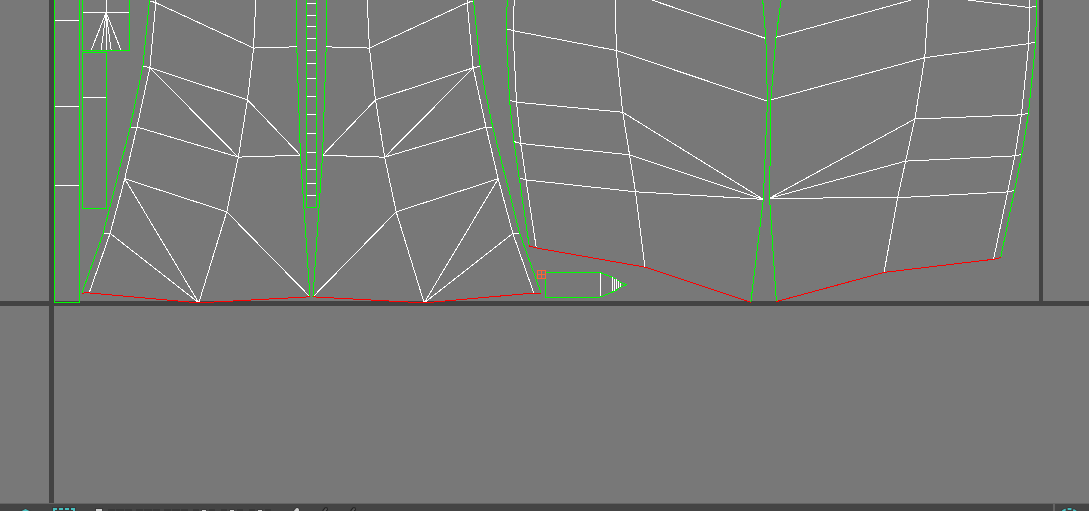The BRAWL² Tournament Challenge has been announced!
It starts May 12, and ends Oct 17. Let's see what you got!
https://polycount.com/discussion/237047/the-brawl²-tournament
It starts May 12, and ends Oct 17. Let's see what you got!
https://polycount.com/discussion/237047/the-brawl²-tournament
Break in the UV is causing a slight visual flaw
Hey guys, I have been working on a Ka-Bar combat knife which features a long blade. In order to get the most UV density I cut the Blade UV in half and would rely on tri-planar mapping in Substance Painter to get around the seam. I applied smoothing groups to UVs and baked. I don't get any visible seam with the textures but I do get a visible flaw where the UV shells were cut:

This is where I placed the UV seam:

These are the UV seams on the UV map(red lines). I original tried straightening these edges but it ended up with even worse results:
It is a small flaw but was wondering if there was a work-around for this? I'm using Max if that helps. I did consider softening these edges but I don't think I can do that in Max as it only uses smoothing groups and I applied smoothing groups to each shell via TexTools. Any help would be greatly appreciated.

This is where I placed the UV seam:

These are the UV seams on the UV map(red lines). I original tried straightening these edges but it ended up with even worse results:

It is a small flaw but was wondering if there was a work-around for this? I'm using Max if that helps. I did consider softening these edges but I don't think I can do that in Max as it only uses smoothing groups and I applied smoothing groups to each shell via TexTools. Any help would be greatly appreciated.
Replies
One option is to split the long uv in half like you've done, or just bake in a non-square texture, like 4096x2048. You'll end uping having to squash that long UV into half the amount length wise. Same result, but no seam.
As others have mentioned, go with a non 1:1 aspect ratio for the UV layout, like 1:2 or even 1:4 if you need to to get this laid out without a seam.
It looks like you probably have way more seams on the grip than you need too. Unnecessary seams add extra vertexes to your mesh, causing them to perform worse. This sort of thing is not likely to make a massive difference on modern GPUs, but there is no reason to have this performance hit (no matter how small) if you don't need to.
I will go back and reduce the seams on the handle although I might not be able to get it all in one seam without some major distortion?
As you can see from that thread there is no issue in UE4, it is an SP rendering issue. Also note that this was just an example to illustrate the issue. I wouldn't put a uv seam there on an actual asset unless it was an extremely long island.